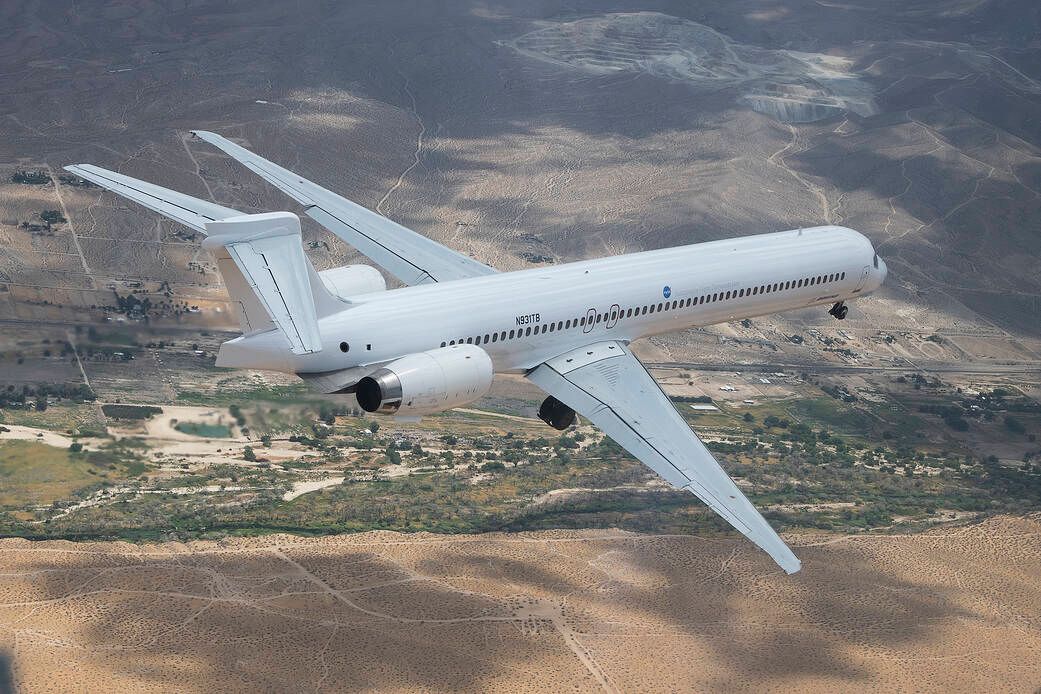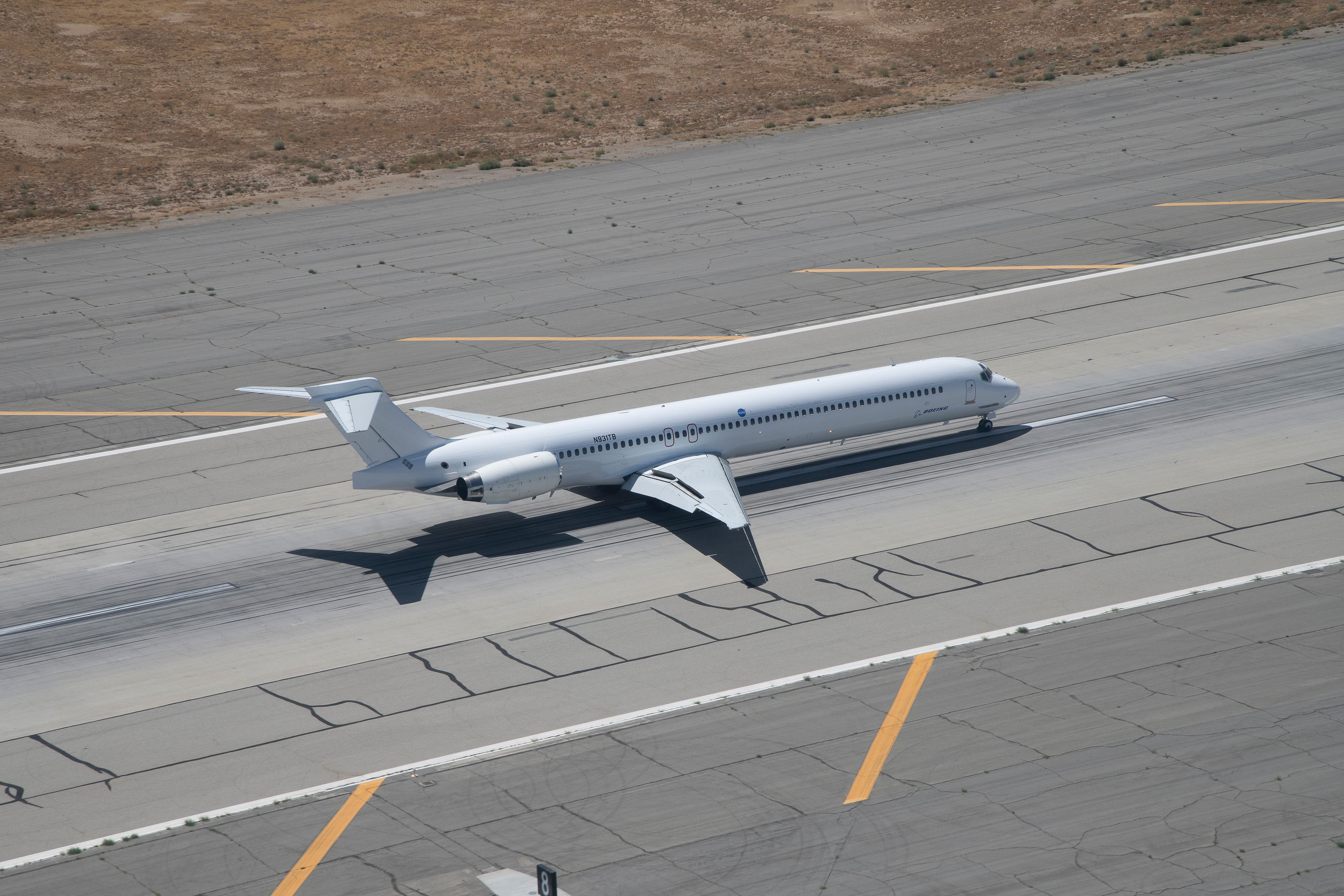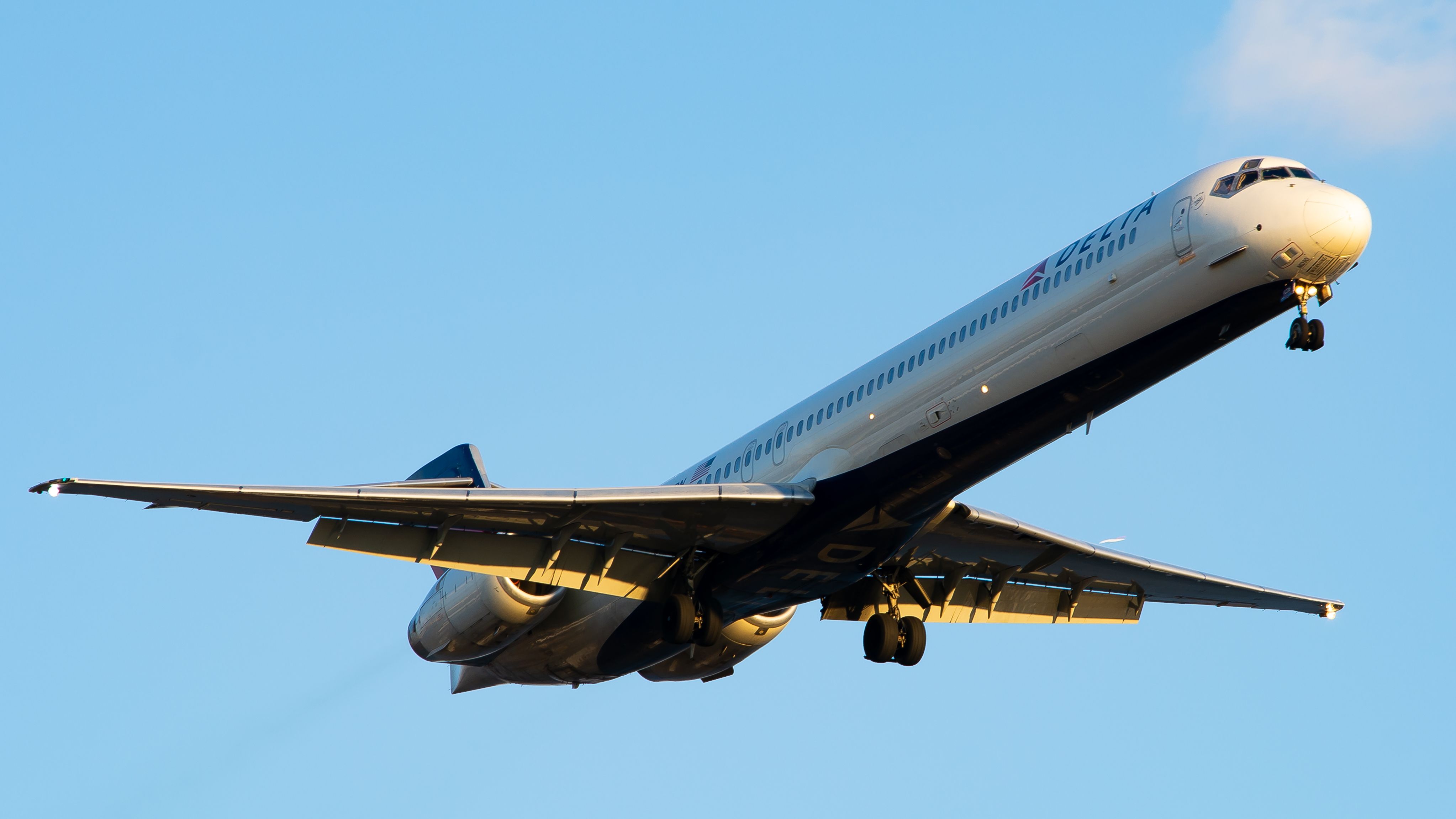Summary
- Boeing and NASA will collaborate to modify a McDonnell Douglas MD-90 aircraft to test the Transonic Truss-Braced Wing (TTBW) configuration, with testing expected to begin in 2028.
- This is an important milestone for NASA's Sustainable Flight Demonstrator project and a step towards achieving net-zero greenhouse gas emissions in aviation by 2050.
- The TTBW design offers a larger wingspan and higher aspect ratio, potentially reducing fuel consumption by up to 30% compared to existing narrowbody aircraft. Such innovations could shape thenger air travel future of passe.
A McDonnell Douglas MD-90 has touched down in Palmdale, CA, after being ferried from Victorville, CA, by Boeing. The manufacturer plans to modify the aircraft to test the Transonic Truss-Braced Wing (TTBW) configuration.
The modifications, to be carried out in collaboration with NASA, are planned to commence soon, with ground and flight testing expected to begin in 2028. The work forms part of NASA's wider Sustainable Flight Demonstrator program.
The arrival of the aircraft marks a significant step for Boeing in developing its experimental X-66A aircraft, which it hopes will help the US achieve its long-term goal of net-zero greenhouse gas emissions in the aviation industry by 2050. The manufacturer's Chief Technology Officer, Todd Citron, celebrated the milestone, saying,
"This marks an important step in the Sustainable Flight Demonstrator project, advances Boeing's commitment to sustainability, and brings us closer to testing and validating the TTBW design."
Meanwhile, the Deputy Associate Administrator for Programs in the NASA Aeronautics Research Mission Directorate, Ed Waggoner, said,
"We at NASA are excited to be working with Boeing on the X-66A Sustainable Flight Demonstrator, making critical contributions to accelerate aviation towards its 2050 net-zero greenhouse gas emission goal."
The Transonic Truss-Braced Wing design
The TTBW's ultrathin wings, supported by struts, offer a larger wingspan and higher aspect ratio, which both Boeing and NASA hope will see the X-66A aircraft burn up to 30% less fuel than existing narrowbody aircraft such as the 737 MAX or the Airbus A320neo. The wings alone have reduced fuel consumption by 9-10% in wind tunnel testing, highlighting the potential contribution the aircraft could make to the future of commercial aviation.
The TTBW concept was first unveiled by Boeing in 2019, although work had been ongoing behind the scenes for more than a decade before as part of the Subsonic Ultra Green Aircraft Research (SUGAR) Program.
Does the TTBW design represent the future of passenger aircraft? Find out more with this report from the Simple Flying team.
The McDonnell Douglas MD-90
The aircraft ferried to Palmdale by Boeing this week was a McDonnell Douglas MD-90, registered as N931TB. Delivered new to China Northern Airlines in 1999, the aircraft then went on to operate for China Southern Airlines and Delta Air Lines.
The MD-90 was built as a successor to McDonnell Douglas' popular MD-80. However, the MD-90 did not match the MD-80's commercial success, with only 116 sold, compared to almost 1,200 of the latter.
Delta Air Lines became the launch customer for the MD-90 in February 1995, going on to fly 65 of the aircraft. The carrier also operated the world's final MD-90 passenger flight in June 2020. Other major operators of the aircraft included Saudia and Japan Airlines, which operated 29 and 16 MD-90s, respectively.
What do you think of the latest step on Boeing's journey toward delivering the X-66A? Does the aircraft symbolize the future of passenger air travel? Share your thoughts by commenting below.
Sources: NASA, ch-aviation.com





